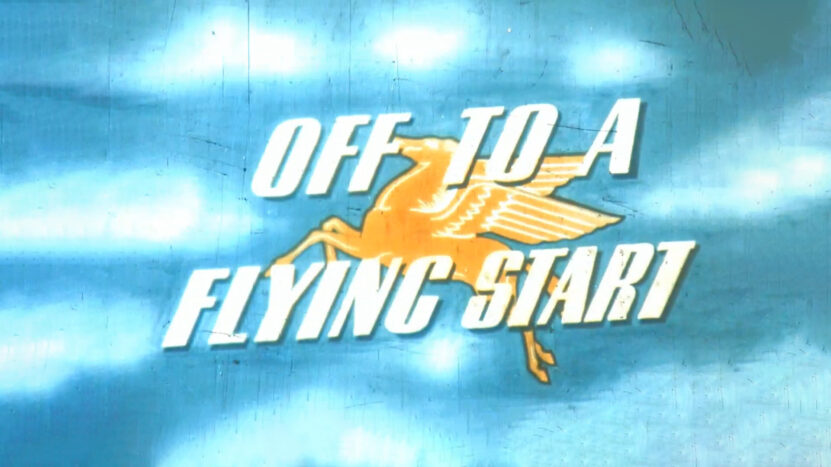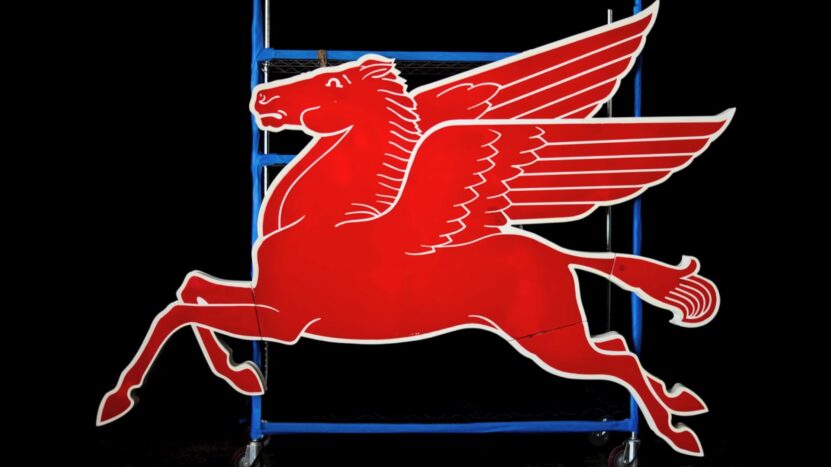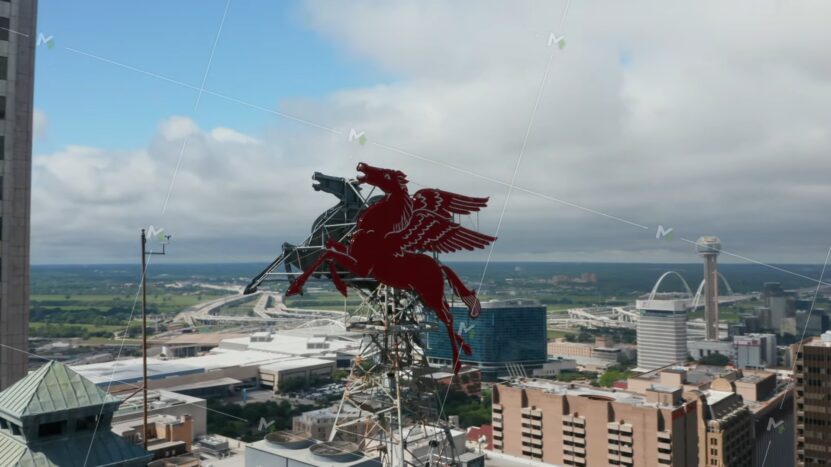In 1922, the Magnolia Petroleum building emerged as a beacon of modernity in Dallas. As the city’s first skyscraper, it not only redefined the Dallas skyline but also marked a significant milestone in architectural history.
Standing as the tallest building west of the Mississippi River, the Magnolia building was a marvel with its 29 floors and seven elevators, surpassing the Adolphus Hotel in stature and grandeur.
The Magnolia building was not just a symbol of architectural prowess but also a pioneer in incorporating modern amenities. In 1997, it was revealed that this skyscraper was the first high-rise in the United States to be equipped with air conditioning.
This innovation was a significant leap forward, considering the building’s inception in the early 20th century. The blend of classical design and modern comforts, restored in 1999, transformed the Dallas Magnolia Hotel into a unique boutique hotel, merging historical elegance with contemporary luxury.
The Iconic Pegasus: More Than Just a Logo
The journey of Magnolia’s Flying Red Horse began in 1911 with the Vacuum Oil Company in Cape Town, South Africa. This subsidiary first trademarked the Pegasus logo, a symbol that would grow to become an enduring emblem of the petroleum industry.
Vacuum Oil, based in Rochester, New York, had established a successful business around petroleum lubricants, long before gasoline became a mainstream product.
Pegasus in Myth and Industry
The Pegasus logo, inspired by Greek mythology where Pegasus carried thunderbolts for Zeus, evolved to become a more powerful and lasting image than the company’s original red gargoyle symbol. By 1931, with the automobile industry’s growth, the product lineup expanded to include Pegasus Spirits and Mobilgas, later known simply as Mobil.
The Pegasus symbol, representing both mythic power and industrial strength, became synonymous with the company’s identity.
The Journey of the Pegasus Sign
The construction of the Pegasus sign, a 35-foot by 40-foot rotating neon spectacle, took a year to complete. It first lit up the Dallas skyline in 1934, coinciding with the American Petroleum Institute’s first annual meeting in the city.
This sign, with its bright red neon glow, became an iconic symbol, rotating above Dallas as the city and the corporate landscape evolved.
The Emblem’s Evolution and Challenges
Over the decades, as corporate mergers and consolidations reshaped the industry, the Pegasus emblem remained a constant fixture above Dallas. However, by 1974, the sign’s motor ceased functioning, and three years later, Mobil Oil vacated the Magnolia building, leaving the once-vibrant sign unmoving and eventually unlit.
It wasn’t until the late 1990s, as part of the building’s transformation into a luxury hotel, that efforts to revive the Pegasus sign began, culminating in a challenging yet successful restoration project.
- Restoration Efforts: The restoration, dubbed Project Pegasus, aimed for a New Year’s Eve 1999 unveiling. The project faced numerous challenges, including repairing the derrick-like tower and updating the mechanical rotation system.
- Craftsmanship and Technology: The restoration required new 16-gauge steel panels, precision cuts to match the original design, and over 1,000 feet of new neon tubing. The task demanded exceptional craftsmanship and the latest technology, with the goal of remaining faithful to the original design.
- Community Involvement: The project, supported by a coalition of patrons and corporate partners, raised over $600,000. This community-driven effort underscored the sign’s significance as a beloved Dallas landmark.
The Cultural Impact of the Flying Red Horse

The Flying Red Horse, or Pegasus, transcends its role as a corporate logo, becoming a cultural icon in Dallas. Its symbolism of power, speed, and progress resonated with the public, embedding itself into the city’s identity.
This emblem became more than just a sign; it was a landmark that citizens of Dallas identified with, representing the city’s dynamic and forward-moving spirit. From an artistic standpoint, the Flying Red Horse is a masterpiece of neon art and a significant piece of 20th-century advertising.
Its historical significance is tied to the evolution of corporate branding and the oil industry’s impact on American society. The sign’s restoration and continued maintenance underscore its importance as a piece of public art and a historical landmark, cherished by both residents and visitors.
The Restoration Project: Challenges and Triumphs
The restoration of the Pegasus sign, dubbed Project Pegasus, was fraught with technical challenges. Restoring the sign’s mechanical rotation system was deemed too costly, leading to a decision to keep it stationary.
The project also involved repairing the derrick-like tower structure and replacing the porcelain-coated steel signage and neon tubing. These tasks required precision and a deep understanding of both historical preservation and modern engineering techniques.
FAQ

Has the Flying Red Horse been featured in any popular culture or media?
The Flying Red Horse has appeared in various media over the years, including films, television shows, and commercials, often symbolizing Dallas or as an emblem of the oil industry’s history.
Are there any special events or celebrations related to the Magnolia Building or the Flying Red Horse?
The Magnolia Hotel occasionally hosts special events and celebrations that pay homage to its rich history and the iconic Flying Red Horse, especially during significant anniversaries or local festivals.
Is there merchandise available featuring the Flying Red Horse?
Yes, various merchandise items featuring the Flying Red Horse, such as apparel, posters, and souvenirs, are available, especially in local Dallas shops and sometimes in the hotel itself.
How has the Magnolia Building influenced modern skyscraper design?
The Magnolia Building has influenced modern skyscraper design through its blend of classical architecture and modern amenities, inspiring a trend in skyscraper construction that balances aesthetic appeal with functional design.
Are there any other notable buildings or landmarks near the Magnolia Hotel worth visiting?
The Magnolia Hotel is conveniently near prominent landmarks in Dallas, including the renowned Adolphus Hotel, known for its exceptional quality and top-rated status. The nearby Old Red Museum and contemporary skyscrapers offer a captivating architectural tour and a chance to immerse in the city’s rich heritage.
Final Words
The Magnolia Building and its Flying Red Horse stand as enduring symbols of Dallas’s architectural innovation and cultural heritage, continuing to inspire and captivate both residents and visitors alike.

